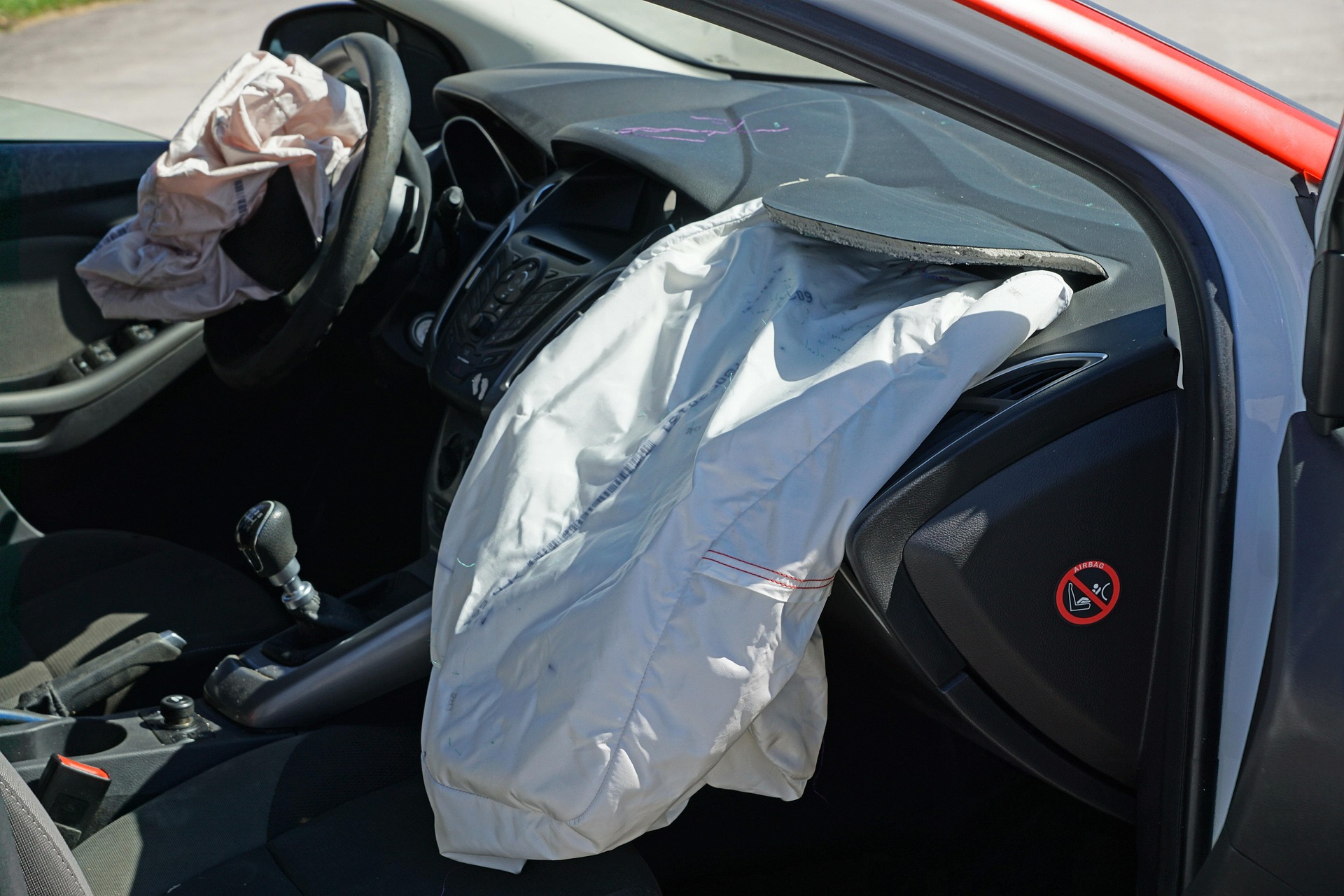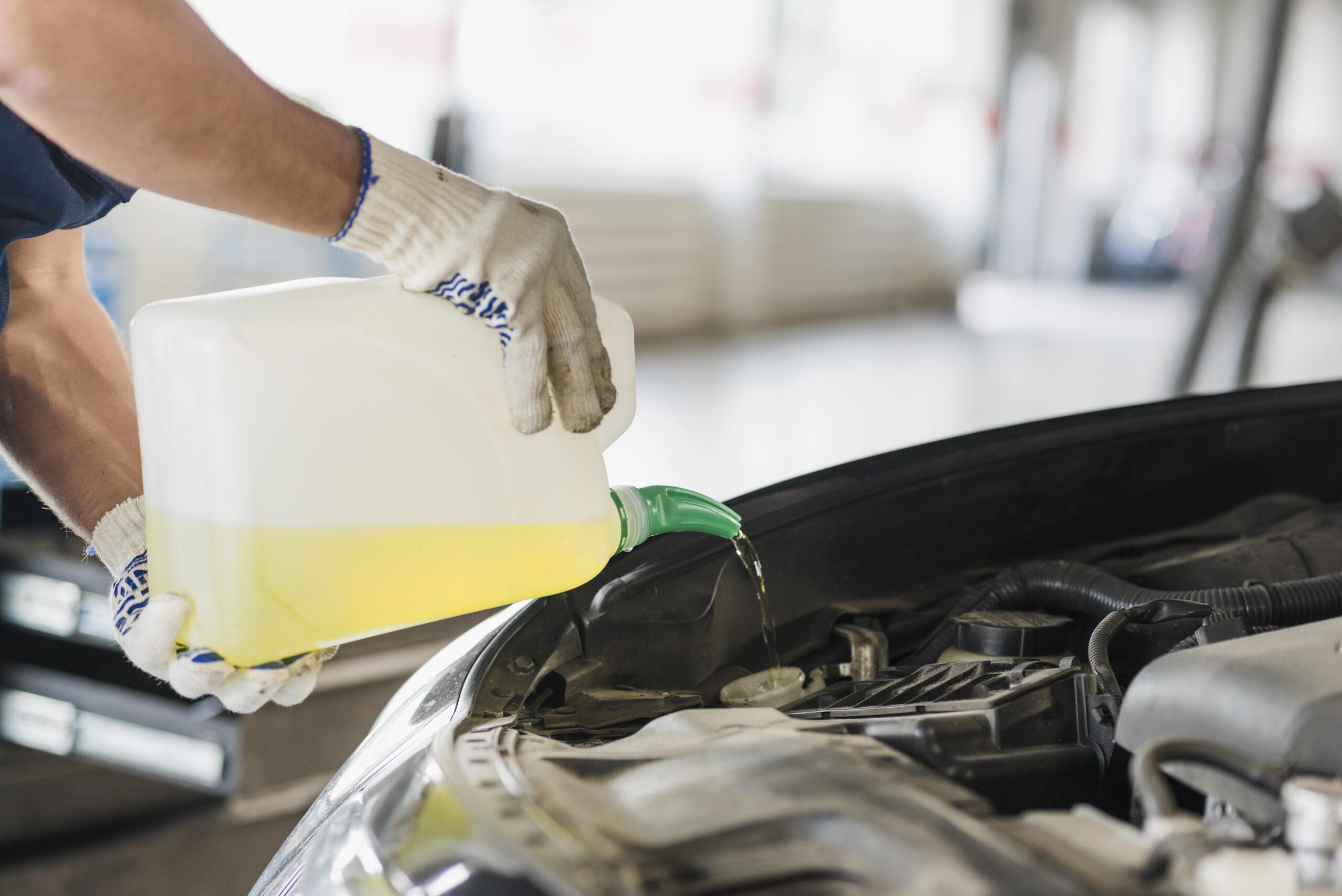At The Torque Team, we’ve recently seen a few cars come in with the airbag warning light on — and the cause was something most people wouldn’t expect. In several cases, the problem wasn’t a faulty sensor or a control module; it was something stored under the front seats. Everyday items like shoes, umbrellas, or even small tool kits had shifted around and damaged the wiring that runs beneath the seats.
In the most recent case, the owner had stored a jump start kit under the driver’s seat. Over time, it rubbed against the airbag wiring and eventually broke the wires. The result? The airbag warning light came on, and the repair involved replacing an expensive airbag module. A small storage habit turned into a big repair bill.
There’s a Lot Going On Under There
Modern vehicles are full of electronics, and the area under the front seats is no exception. You’ll typically find:
- Wiring harnesses for seatbelt pretensioners
- Connectors for seat airbags (side-impact airbags built into the seat)
- Occupant detection sensors that tell the system when someone is sitting in the seat
- Power seat motors and seat heating components
These are all essential parts of your car’s safety and comfort systems. The airbag wiring in particular is sensitive — and if it’s pinched, stretched, or damaged, it will trigger a fault code and illuminate the airbag warning light on your dashboard.
A Simple Mistake That Can Cost You Big
We understand the temptation to make the most of every bit of space in your car, especially under the seats where things can be kept out of sight. But unfortunately, that space isn’t designed for storage.
Items stored under the seats can shift during driving, snag wires, or even press on the connectors. The wiring under there isn’t designed to handle movement or abrasion. When those delicate wires are damaged, the system detects a fault and turns on the airbag light.
Why the Airbag Light Matters
When your airbag warning light comes on, it means the system has found a problem — and likely deactivated one or more airbags. In a crash, that can mean the airbags may not deploy at all.
If your airbag light is illuminated:
- Don’t ignore it. It’s a safety-critical warning, not just a nuisance light.
- Avoid clearing the fault without proper diagnosis. The issue needs to be physically inspected and repaired.
- Check under the front seats. Before booking your car in, have a quick look for anything that might be pressing or rubbing on wiring. You might save yourself a diagnostic fee if that’s the cause.
How to Prevent Airbag Wiring Damage
Here are a few simple habits that can help avoid this issue altogether:
- Keep under-seat areas clear. Avoid storing anything beneath the front seats.
- Be gentle when vacuuming or cleaning. Tugging on connectors can cause intermittent faults.
- Move seats carefully. Make sure nothing is obstructing the seat tracks when adjusting them.
- Leave airbag wiring repairs to professionals. These are safety systems — DIY fixes aren’t safe or reliable.
A Small Fix Before It Becomes a Big One
That jump start kit under the seat caused hundreds of dollars’ worth of damage, but the real risk was safety. A faulty airbag system may leave you and your passengers unprotected in a crash.
So, if your airbag light is on, take a minute to check under your seats before assuming the worst. If you spot damaged wiring or can’t find the cause, bring your car in — The Torque Team can diagnose the fault properly and make sure your airbag system is ready to protect you when it matters most.
Final Thoughts
That space under your front seats might seem like a handy storage spot, but it’s home to important safety wiring. Keep it clear — and if that airbag light pops on, get it checked. A quick look could save you from an expensive repair and ensure your airbags are ready to do their job.
At The Torque Team, we’ve recently seen a few cars come in with the airbag warning light on — and the cause was something most people wouldn’t expect. In several cases, the problem wasn’t a faulty sensor or a control module; it was something stored under the front seats. Everyday items like shoes, umbrellas, or even small tool kits had shifted around and damaged the wiring that runs beneath the seats.
In the most recent case, the owner had stored a jump start kit under the driver’s seat. Over time, it rubbed against the airbag wiring and eventually broke the wires. The result? The airbag warning light came on, and the repair involved replacing an expensive airbag module. A small storage habit turned into a big repair bill.
There’s a Lot Going On Under There
Modern vehicles are full of electronics, and the area under the front seats is no exception. You’ll typically find:
- Wiring harnesses for seatbelt pretensioners
- Connectors for seat airbags (side-impact airbags built into the seat)
- Occupant detection sensors that tell the system when someone is sitting in the seat
- Power seat motors and seat heating components
These are all essential parts of your car’s safety and comfort systems. The airbag wiring in particular is sensitive — and if it’s pinched, stretched, or damaged, it will trigger a fault code and illuminate the airbag warning light on your dashboard.
A Simple Mistake That Can Cost You Big
We understand the temptation to make the most of every bit of space in your car, especially under the seats where things can be kept out of sight. But unfortunately, that space isn’t designed for storage.
Items stored under the seats can shift during driving, snag wires, or even press on the connectors. The wiring under there isn’t designed to handle movement or abrasion. When those delicate wires are damaged, the system detects a fault and turns on the airbag light.
Why the Airbag Light Matters
When your airbag warning light comes on, it means the system has found a problem — and likely deactivated one or more airbags. In a crash, that can mean the airbags may not deploy at all.
If your airbag light is illuminated:
- Don’t ignore it. It’s a safety-critical warning, not just a nuisance light.
- Avoid clearing the fault without proper diagnosis. The issue needs to be physically inspected and repaired.
- Check under the front seats. Before booking your car in, have a quick look for anything that might be pressing or rubbing on wiring. You might save yourself a diagnostic fee if that’s the cause.
How to Prevent Airbag Wiring Damage
Here are a few simple habits that can help avoid this issue altogether:
- Keep under-seat areas clear. Avoid storing anything beneath the front seats.
- Be gentle when vacuuming or cleaning. Tugging on connectors can cause intermittent faults.
- Move seats carefully. Make sure nothing is obstructing the seat tracks when adjusting them.
- Leave airbag wiring repairs to professionals. These are safety systems — DIY fixes aren’t safe or reliable.
A Small Fix Before It Becomes a Big One
That jump start kit under the seat caused hundreds of dollars’ worth of damage, but the real risk was safety. A faulty airbag system may leave you and your passengers unprotected in a crash.
So, if your airbag light is on, take a minute to check under your seats before assuming the worst. If you spot damaged wiring or can’t find the cause, bring your car in — The Torque Team can diagnose the fault properly and make sure your airbag system is ready to protect you when it matters most.
Final Thoughts
That space under your front seats might seem like a handy storage spot, but it’s home to important safety wiring. Keep it clear — and if that airbag light pops on, get it checked. A quick look could save you from an expensive repair and ensure your airbags are ready to do their job.








